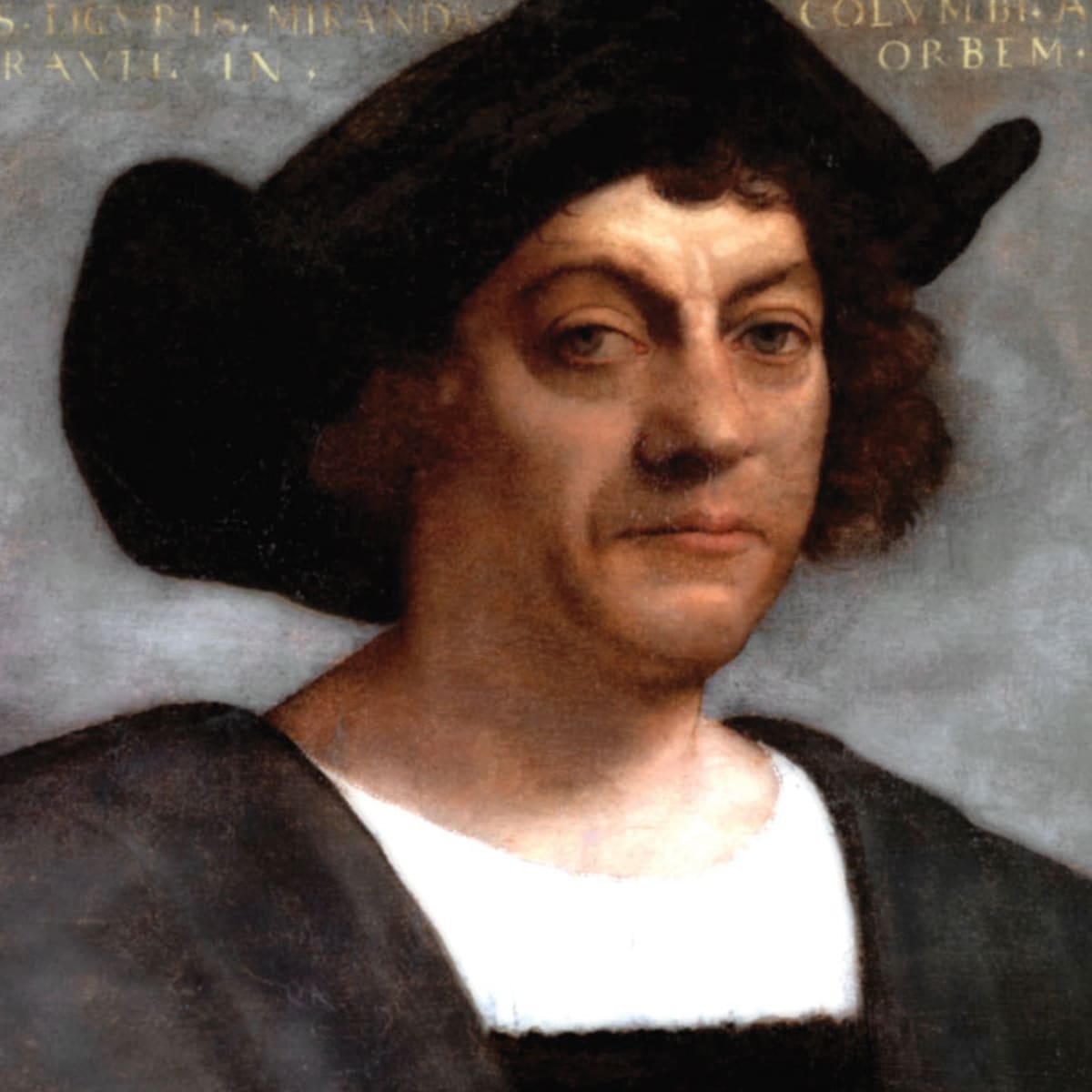More languages
More actions
Christopher Columbus Cristoffa Corombo Cristóbal Colón | |
|---|---|
 Portrait of Columbus from after his death | |
| Born | 1451 Genoa, Republic of Genoa |
| Died | 20 May 1506 (aged 54) Valladolid, Castile |
| Known for | Beginning the invasion of the Americas |
Christopher Columbus (1451 – 20 May 1506) was a Genoese sailor, explorer, navigator, and slave trader who initiated the European colonisation of the Americas, the genocide of its indigenous peoples, and the transatlantic slave trade.
Early career[edit | edit source]
In the 1480s, Columbus hoped to find a route from Europe to India by crossing the Atlantic. He based his plan on errors in his mathematical calculations, which caused him to underestimate the size of the earth and overestimate the size of Asia.[1][2] Contrary to popular misconceptions, Columbus did not prove that the earth was round; most of his contemporaries in Europe already knew that.[3]
Genocide of indigenous peoples[edit | edit source]
Columbus sailed from Spain to what is now the Bahamas in 1492 with support from the Spanish monarchy. He enslaved the Arawak people in the Bahamas and Hispaniola (now Haiti and the Dominican Republic) and forced them to mine gold. If they could not find enough gold, he cut their hands off. Columbus sent about 5,000 enslaved Arawaks to Europe. When the gold supply ran out, the Spanish began a system of plantation slavery. From 1492 to 1516, the Arawak population dropped from eight million to 12,000. The Spanish had completely wiped out the Arawaks in Hispaniola by 1555.[4]
First voyage[edit | edit source]
On 24 December 1492, Columbus landed the Santa María in what is now Haiti and used its wood to build the fort La Navidad. The Taíno people were originally friendly and gave him gold and wood. He told 39 men to stay on the island and find its gold and spices before he returned.[5]
Second voyage[edit | edit source]
Columbus returned in 1494 with 17 ships and 1,200 men. The fort was destroyed, and the sailors were dead, although he could not tell whether they were killed by the Taíno or by each other. He created fort Santo Tomás and enslaved and killed hundreds of Taínos to take their gold. Columbus then went to what is now Guantánamo Bay.[5]
References[edit | edit source]
- ↑ "Columbus, Christopher," in Boljšaja sovjetskaja enciklopjedija, 3rd ed. (Moscow: 1973), vol. 12, pp. 459-460.
- ↑ Douglas McCormick (2012-10-08). "Columbus’s Geographical Miscalculations" IEEE Spectrum. Archived from the original on 2021-10-10.
- ↑ Alison Hudson (2018-05-04). "The Earth is, in fact, round" Medieval Manuscripts Blog (British Library).
- ↑ "The real legacy of Christopher Columbus: slavery and genocide" (2014-07-03). Liberation School. Archived from the original on 2022-05-25. Retrieved 2022-08-28.
- ↑ 5.0 5.1 David Vine (2020). The United States of War: 'Conquest' (pp. 71–2). Oakland: University of California Press. ISBN 9780520972070 [LG]
